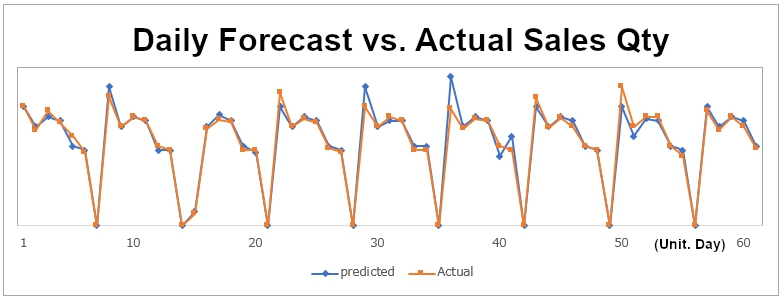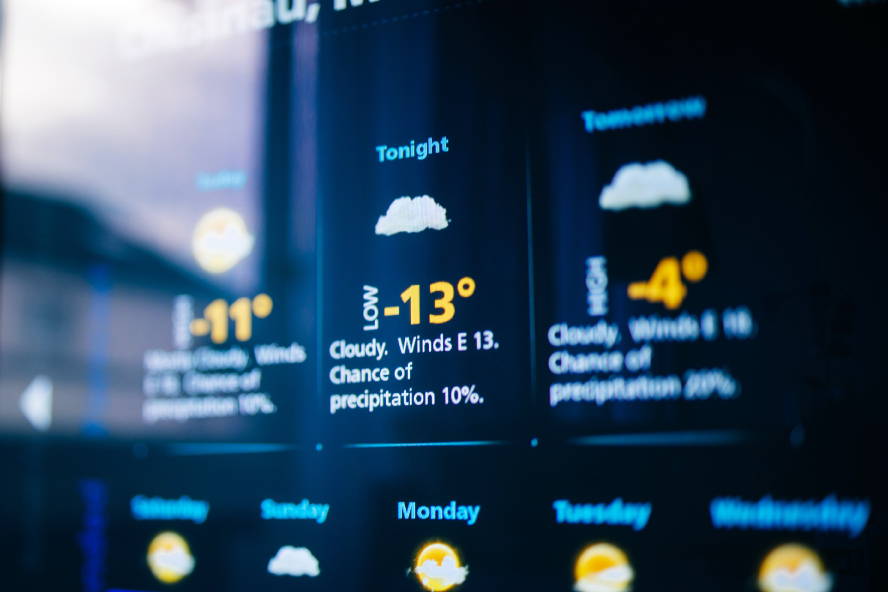AI Demand Forecasting
Demand Forecasting using Artificial Intelligence
Demand forecasting utilizes advanced AI and machine learning techniques
The Baseline Forecasting Module (BF) is a cutting-edge solution that utilizes the power of machine learning and traditional statistical techniques. It is used to generate accurate and detailed demand forecasts for consumer goods and B2B supplied parts. The BF module leverages analyzing actual sales data to identify patterns and trends, which are then incorporated into the forecasting process to improve its accuracy. The machine learning algorithm used in the BF module is designed to continuously learn and adapt, ensuring that the demand forecasts generated are always based on the most current and relevant data available.

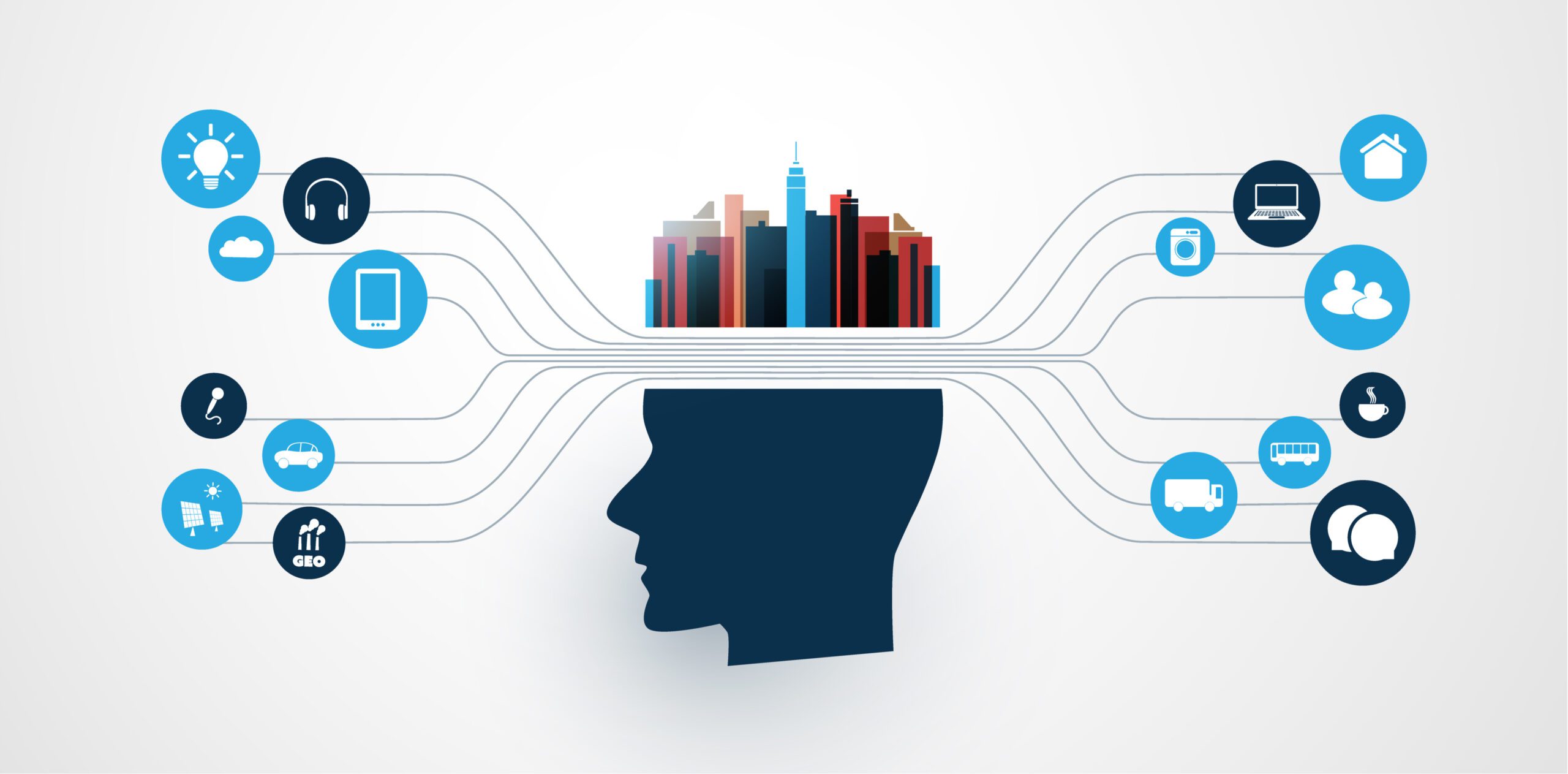
Machine learning analyzes sales data to identify factors that impact consumer behavior, including weather, income, and trends
Zionex's Baseline Forecasting Module (BF) is a state-of-the-art solution that utilizes the power of deep learning, a powerful subset of machine learning, to improve demand forecasting for consumer goods and B2B supplied parts. The BF module goes beyond analyzing past sales data and takes into account a wide range of external factors that influence consumer purchasing decisions, such as weather, economic indicators, and consumer sentiment. This allows the BF module to provide a more detailed and accurate forecast, giving businesses the insights they need to make informed decisions and optimize their operations.
In addition to analyzing external factors, the BF module also analyzes product prices and trends for competing products. This enables the BF module to identify opportunities and position products where and when consumers need them most, which improves forecasting accuracy and helps businesses stay ahead of the competition. With the BF module, businesses can be confident that they are making informed decisions that are based on the most current and relevant data available.
Demand forecast with promotions
As a consumer product seller, our sales are highly influenced by trends and promotional campaigns, but we struggle to accurately measure their impact on our demand forecasting.
External Factors impacting demands
Our sales are impacted by external factors such as weather, inflation, and exchange rates. However, we have not been successful in incorporating these factors into our demand forecasting process.
Demand forecasts for online marketplaces
We sell through online marketplaces and have lots of historical sales data, but we have never been able to utilize this data for our sales forecasting.
AI Forecasting provides an insight on forecasting methods based on nature of business and product characteristics
Forecasting demand is a complex and nuanced process that requires a tailored approach for each scenario. It is important to note that there is no one-size-fits-all forecast model that can be applied to all scenarios, as each industry, business, and product has its own unique characteristics and requirements.
To address this, we at Zionex employ a data-driven approach that begins with analyzing past performance, which enables us to gain a deeper understanding of the market and the factors that influence demand. Based on this analysis, we carefully select a suitable demand forecast model that aligns with the industry type, business nature, and product characteristics. The chosen model is then fine-tuned and calibrated to suit the specific requirements of the business and products.
Moreover, to ensure the implementation of the forecast model, we develop operational standards and guidelines that provide a clear roadmap for sales plans. This includes setting clear targets and milestones, as well as establishing a system for monitoring and adjusting the forecast as necessary. By using this approach, we are able to deliver accurate and actionable demand forecasts that help businesses make informed decisions and optimize their operations.
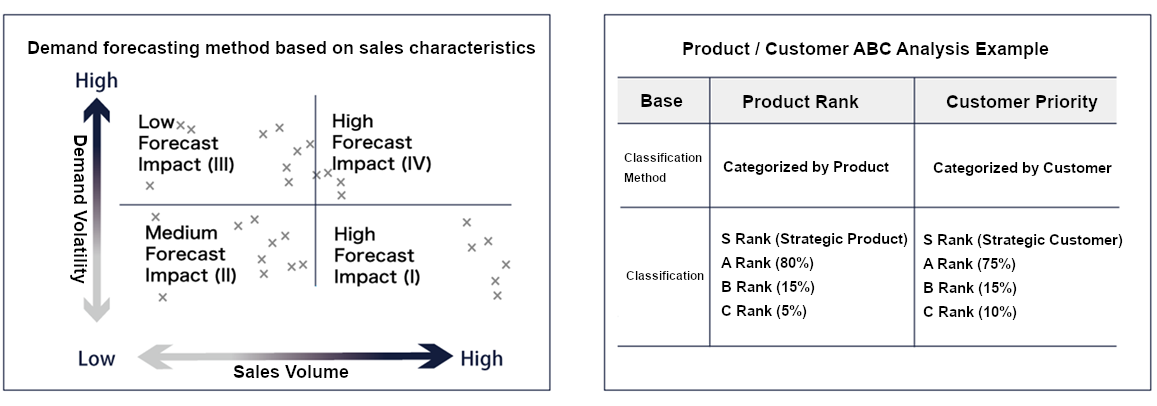
Food manufacturer's demand forecast, on average, has an accuracy of 80% or higher when utilizing AI
A food and beverage manufacturer is utilizing the power of machine learning to enhance its demand forecasting capabilities for a particular product at a convenience store. By inputting a wealth of historical performance data from the past 2-3 years into an advanced AI forecasting engine, the manufacturer is able to make use of complex algorithms and statistical models to predict the sales volume for the upcoming two months with a high degree of accuracy.
The machine learning algorithm used in this process is designed to continuously learn and adapt, taking into account a wide range of factors that influence demand, such as weather, economic indicators, consumer sentiment, and competitors' prices and trends. This allows the manufacturer to not only predict the future sales volume but also identify potential risks and opportunities, giving them a competitive edge in the market.
Moreover, the manufacturer also able to use the forecasted sales volume to optimize production schedules and inventory management, reducing waste and increasing efficiency. By using this advanced machine learning system, the manufacturer is able to make data-driven decisions that improve their bottom line and provide a better service to their customers.
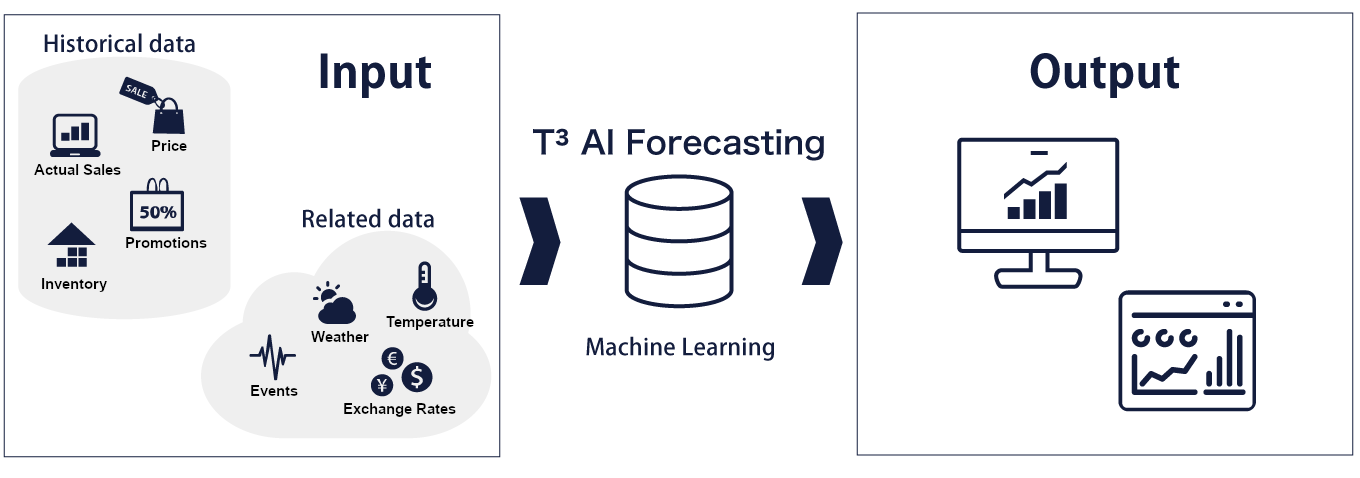
The food and beverage manufacturer is able to gauge the effectiveness of their AI forecasting system by comparing the actual two-month performance data with the data calculated by the AI Forecasting engine. The results have been impressive, with the forecast quantity difference being around 6% on average, which is considered to be a highly acceptable margin of error. Additionally, the forecast accuracy has been consistently high, with an average of 80% or higher.
This level of accuracy is particularly important for the manufacturer, as it allows them to make more informed decisions and optimize their operations. By having a high level of confidence in their demand forecasts, the manufacturer can better plan production schedules and inventory management, which helps them to reduce waste and increase efficiency.
Furthermore, by consistently maintaining an accuracy rate of 80% or higher, the manufacturer is able to improve their forecasting capabilities over time, which will enable them to make better decisions and anticipate market trends more effectively. This ultimately leads to increased profitability and a better service to their customers.
